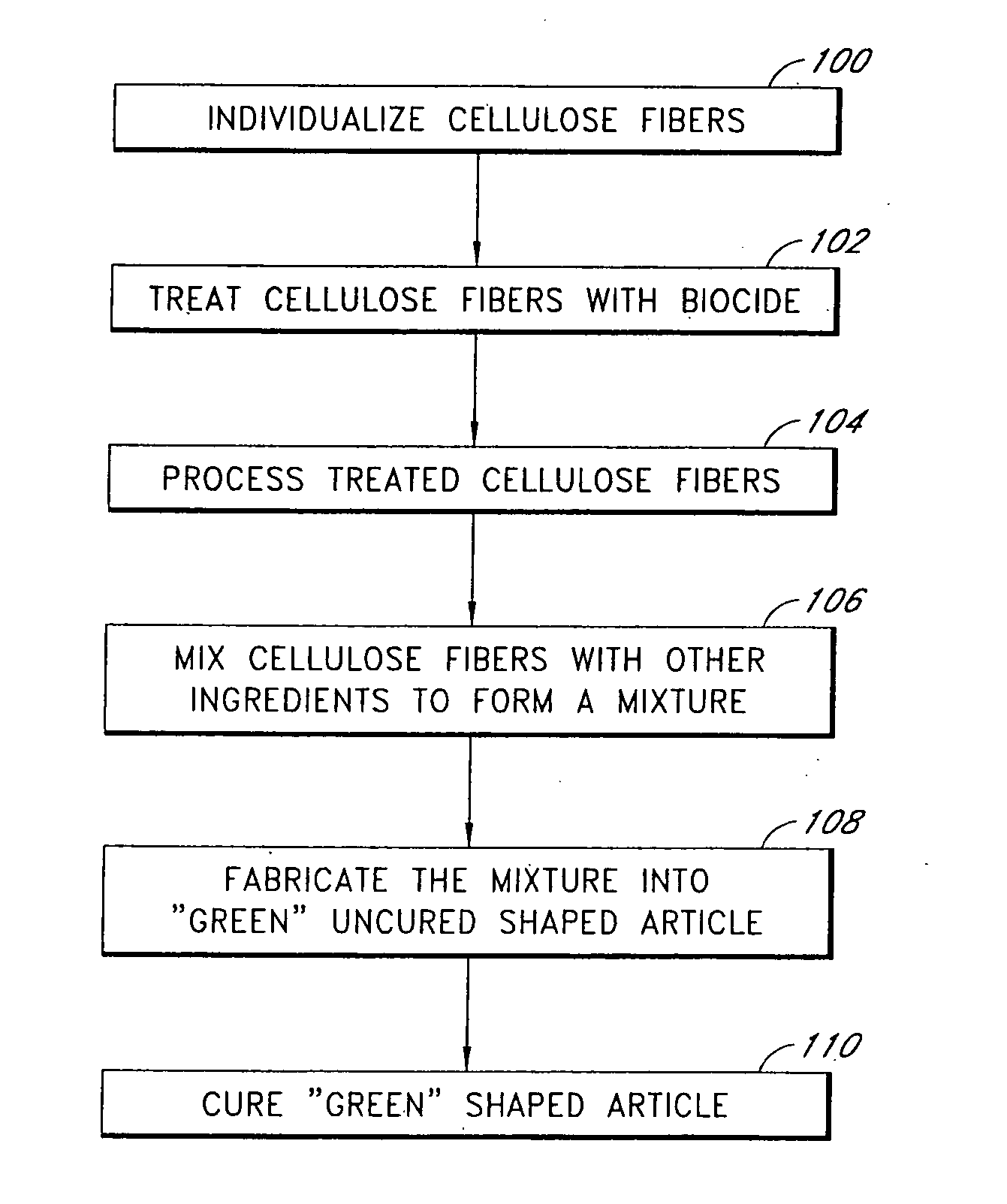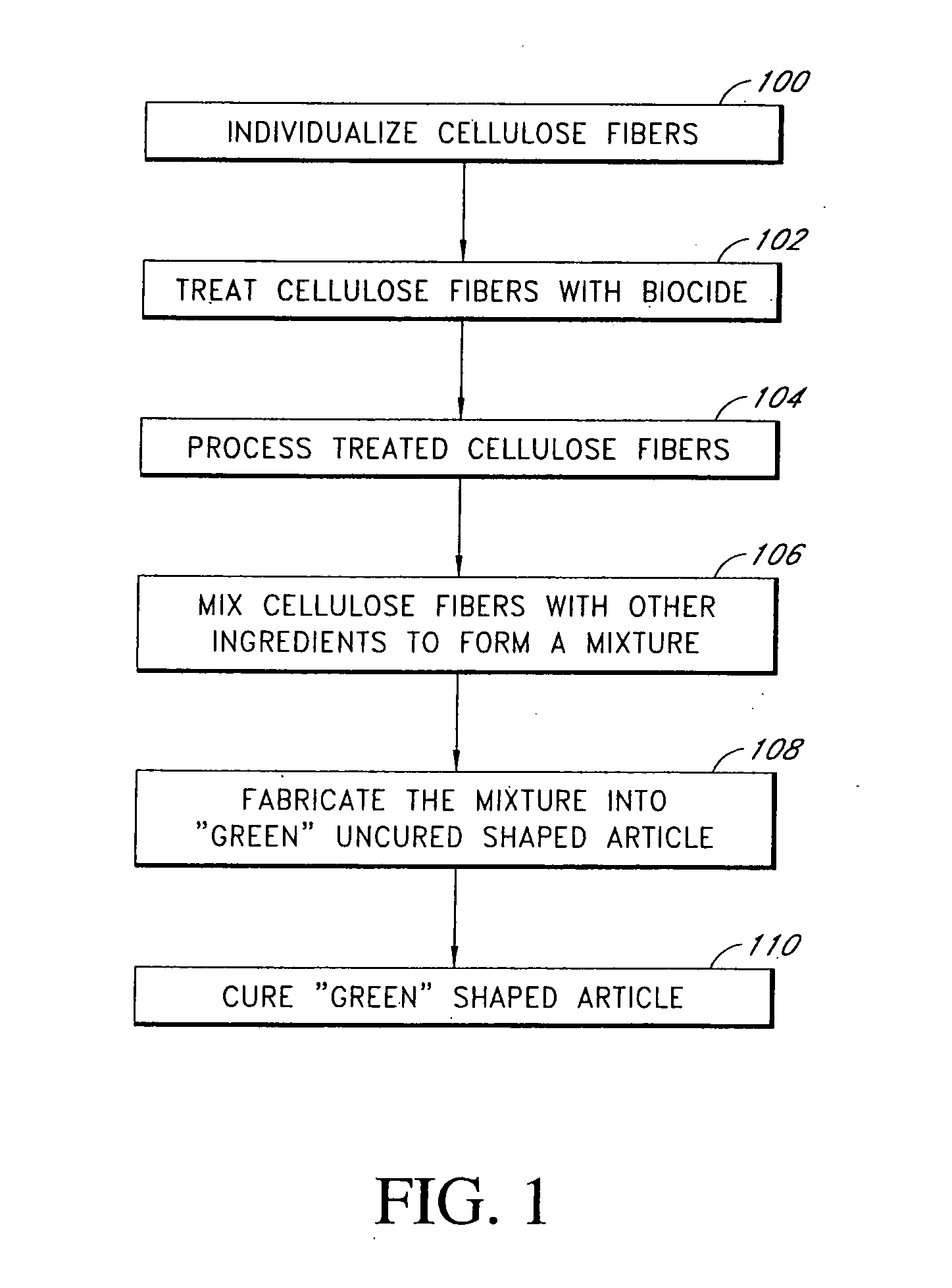Fiber cement composite material using biocide treated durable cellulose fibers
a cellulose fiber and composite material technology, applied in the direction of antifouling/underwater paints, water-setting substance layered products, solid waste management, etc., can solve the problems of inability to nail the high density matrix, inability to meet the requirements of high-density cellulose reinforced cement products, and inability to meet the requirements of high-density cellulose fibers. to achieve the effect of improving the rot resistance and durability of the final composite materials
- Summary
- Abstract
- Description
- Claims
- Application Information
AI Technical Summary
Benefits of technology
Problems solved by technology
Method used
Image
Examples
Embodiment Construction
[0033] The preferred embodiments of the present invention describe the use of biocide treated cellulose fibers in cementitious fiber reinforced building materials. These embodiments encompass not only the building product formed with biocide treated fibers, but also the formulation and the methods of manufacture of the composite materials, as well as the methods for chemically treating the fibers to improve the durability of the fibers. Further details on related chemical treatments of fibers, particularly individualized cellulose fibers, in order to improve the resistance of the resulting building material to water and / or environmental degradation, are found in U.S. Pat. Nos. 6,676,745, 6,676,744, and U.S. patent application Ser. No. 09 / 970,389, the entirety of each of these applications being hereby incorporated by reference. It will be appreciated that the aspects of the present invention are not applicable solely to cellulose fiber reinforced cementitious products, and according...
PUM
| Property | Measurement | Unit |
|---|---|---|
| lengths | aaaaa | aaaaa |
| lengths | aaaaa | aaaaa |
| lengths | aaaaa | aaaaa |
Abstract
Description
Claims
Application Information
 Login to View More
Login to View More - R&D
- Intellectual Property
- Life Sciences
- Materials
- Tech Scout
- Unparalleled Data Quality
- Higher Quality Content
- 60% Fewer Hallucinations
Browse by: Latest US Patents, China's latest patents, Technical Efficacy Thesaurus, Application Domain, Technology Topic, Popular Technical Reports.
© 2025 PatSnap. All rights reserved.Legal|Privacy policy|Modern Slavery Act Transparency Statement|Sitemap|About US| Contact US: help@patsnap.com



